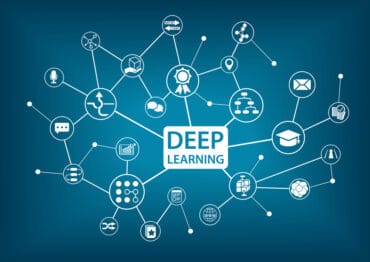
Beyond simple automation, RPA processes can use AI, ML, and other advanced computer technologies to build a foundation that streamlines entire business processes.
As 2022 ramps up, COVID seems to be (hopefully? Finally?) edging into the rearview mirror. But we’re not out of the woods yet. For businesses to emerge stronger and more profitable after three long years of disruptions, they have an opportunity to rethink how they do business, and automation of business processes can be a powerful tool in doing so. Whether it’s retail, manufacturing, shipping, or any other industry, really, robotic process automation (RPA) can eliminate tedious tasks, increase accuracy, and add value to a company’s bottom line. But companies looking to streamline and automate their operating processes should keep a few things in mind first.
See also: What RPA Is, What It’s Not, and Why It Matters
What is robotic process automation?
RPA is software that enables digital workers (“bots”) to carry out step-by-step tasks or business processes within your existing systems and applications, much like a human would. Companies can use RPA extension tools to examine business processes and determine the best ways to process a transaction, store data, or place orders for new supplies, for example. But beyond simple automation, RPA processes can use artificial intelligence (AI), machine learning (ML), and other advanced computer technologies to build a foundation that streamlines entire business processes.
For example, the New Zealand-based Fonterra uses a bot to help re-classify its dairy inventory when it has excess supply. By hand, this process involves 38 checks in company systems to make sure the re-classified product meets customer and regulatory requirements. And there are at least 30 of these requests every day. The bot, however, conducts all the necessary regulatory checks. It can evaluate natural language reports or structure data to determine a product’s eligibility for re-classification and even email human workers for help if it gets confused. It can shave two hours of work down to 10-20 minutes, and Fonterra credits the bot with saving it more than NZ $180,000 every year.
That sounds great, but as impressive as the technology is, businesses exploring robotic process automation solutions should first examine how they do business at the most fundamental level.
Focus on the processes
Understanding a company’s business process is critical, and the primary value driver in RPA adoption should be what work can be directly improved. It is not just the shift of work to automation; it is the understanding and sharing of work between digital and human teams to provide more effective, efficient, and resilient results. This often involves a better understanding of the work and the processes rather than the technology.
This means companies need to be willing to re-imagine their market strategies to ensure they remain relevant and meet customer demands. Then, they should build operational agility and resilience to compete in an unpredictable marketplace.
See also: Covid Pushed Manufacturers Even Deeper into the AI Realm
Recognize who in the organization understands processes
Once companies have a handle on what the processes are, they should focus on those who understand how they work—or don’t work, in some cases. This is why an effective Center of Excellence (CoE)—a team of process and technology experts, business analysts, and business users inside the company—is critical. CoEs are pivotal in deploying any successful enterprise-grade intelligent automation program. They encourage buy-in, instill best practices, serve as a knowledge base, and provide tangible benefits to the business.
Why is this important? Because as automated processes grow more complex, they will sometimes need human oversight and correction. Many AI/ML processes are based on confidences and data models. CoEs can provide an understanding of how to adjust data models so that the digital teammates can best be empowered.
When using automation, keep maintainability in mind
Finally, companies should think about maintaining automation in the future. Processes and data models change. Employees with institutional knowledge of how processes work leave. So, processes and systems of records have to be designed for reuse and maintainability. This built-in “ability to adapt” is critical to saving money in the long run. Adjusting data models is one thing; designing entirely new automation systems because the processes no longer serve the company’s needs is another—and more expensive—thing entirely.
If a process is designed with intelligent building blocks, sometimes it’s only a matter of changing the data location to keep it humming along. However, these changes often affect several processes; by designing them for reuse from the start, the maintenance and modification can be done with significantly less effort.
In conclusion, it’s important to remember that processes begin and end with people. Companies need a symbiotic relationship between digital and human labor, which can reinvigorate and change the perception of automation from anxiety to a more positive outlook. For example, automation has enabled the move to hybrid/remote working, which would otherwise have been much more difficult if not impossible. In the end, automation is an enabler for positive change.





























